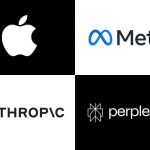By The Malketeer
Dr M’s Pavilion Visit Reignites Language Controversy
The familiar cadence of former Prime Minister Tun Dr Mahathir Mohamad’s voice carries weight even in the digital realm.
This time, however, his critique sparked heated discussions after images surfaced on his X account of signboards in Chinese and English, but not in Malay, at Pavilion Bukit Jalil.
The former premier’s commentary raised an age-old question: in a multi-ethnic Malaysia, what role should the national language play in public spaces?
Old Leader, New Critique: Revisiting National Language Pride
In his recent post, Dr Mahathir, no stranger to impassioned debates on national identity, expressed concern over signboards that seemed to cater exclusively to Chinese customers.
His rhetorical question—“Has Malaysia become part of China?”—echoed loudly online, inviting both agreement and censure.
Mahathir’s remarks, coupled with the photos he personally took, spotlighted a sentiment often voiced in Malaysia: the protection and prominence of Bahasa Melayu as a unifying language.
However, reactions were swift and pointed.
Some netizens highlighted the irony, noting that even The Loaf, Mahathir’s now-defunct bakery, had an English name with no Malay translation.
“Where was the Bahasa Melayu pride then?” asked one user, reminding the public of the complexities in calls for linguistic uniformity.
Cultural Signboards: A Targeted Market or Inclusive Oversight?
Critics of Mahathir’s comments argued that the shops in question, selling non-halal items, naturally targeted a niche market of predominantly Chinese-speaking customers.
Translating items like “pork buns” to Malay, they said, would only create unnecessary confusion for Muslim consumers.
The balance between targeted marketing and inclusive practices, it seems, remains a tightrope walk for businesses in Malaysia.
This highlights a deeper question: how should businesses in a multicultural society balance their appeal to specific demographics while respecting the broader national ethos?
The challenge goes beyond mere signboards, touching on the essence of Malaysia’s unique blend of heritage, commerce, and identity.
Regulatory Reminders: Balancing Identity and Commerce
The debate didn’t just unfold online. It comes amid real-life regulatory actions, with Kuala Lumpur City Hall (DBKL) reminding businesses of the Advertisement (Federal Territory) By-laws 1982, which mandate the use of Malay in advertisements.
So far, DBKL has issued 20 fault notices and 10 enforcement notices to shops over excessive use of foreign languages in their signboards.
While the law upholds the prominence of Bahasa Melayu, shop owners argue that non-Malay signage is often used for practical reasons—to appeal to tourists or cater to communities familiar with these languages.
DBKL’s stance underscores the government’s effort to strike a balance between cultural representation and the assertion of Malaysia’s national language in public spaces.
Signboards as Cultural Signifiers
Dr Mahathir’s observations, met with both criticism and reflection, have reignited discussions about Malaysia’s linguistic landscape.
The intricate interplay between commerce, language, and identity is not new but remains an ever-relevant topic as the nation navigates its multicultural identity in a globalised world.
As regulations tighten and public discourse intensifies, Malaysian businesses continue to find themselves at the crossroads of cultural sensitivity and targeted strategy.
What’s clear is that language in Malaysia is not just a means of communication—it’s a symbol, a connector, and sometimes, a point of contention.










